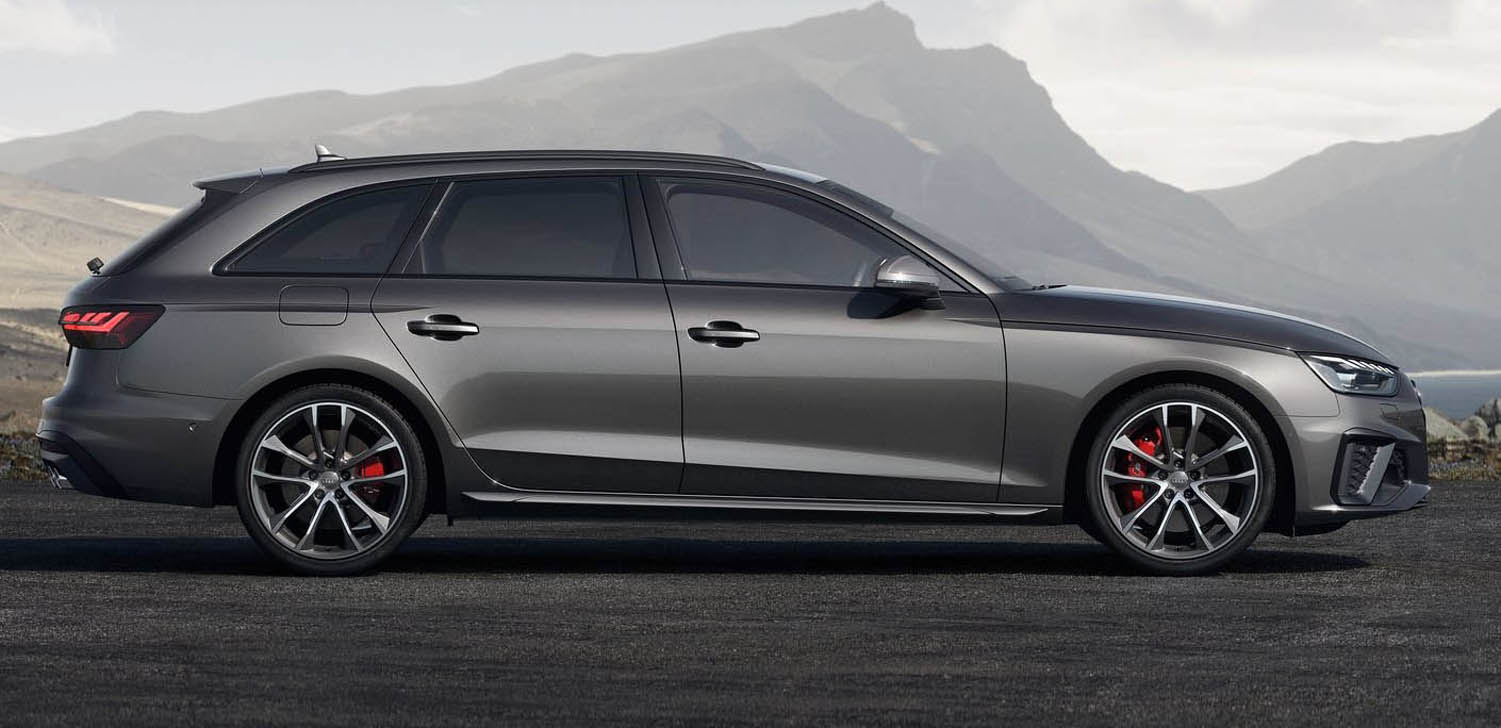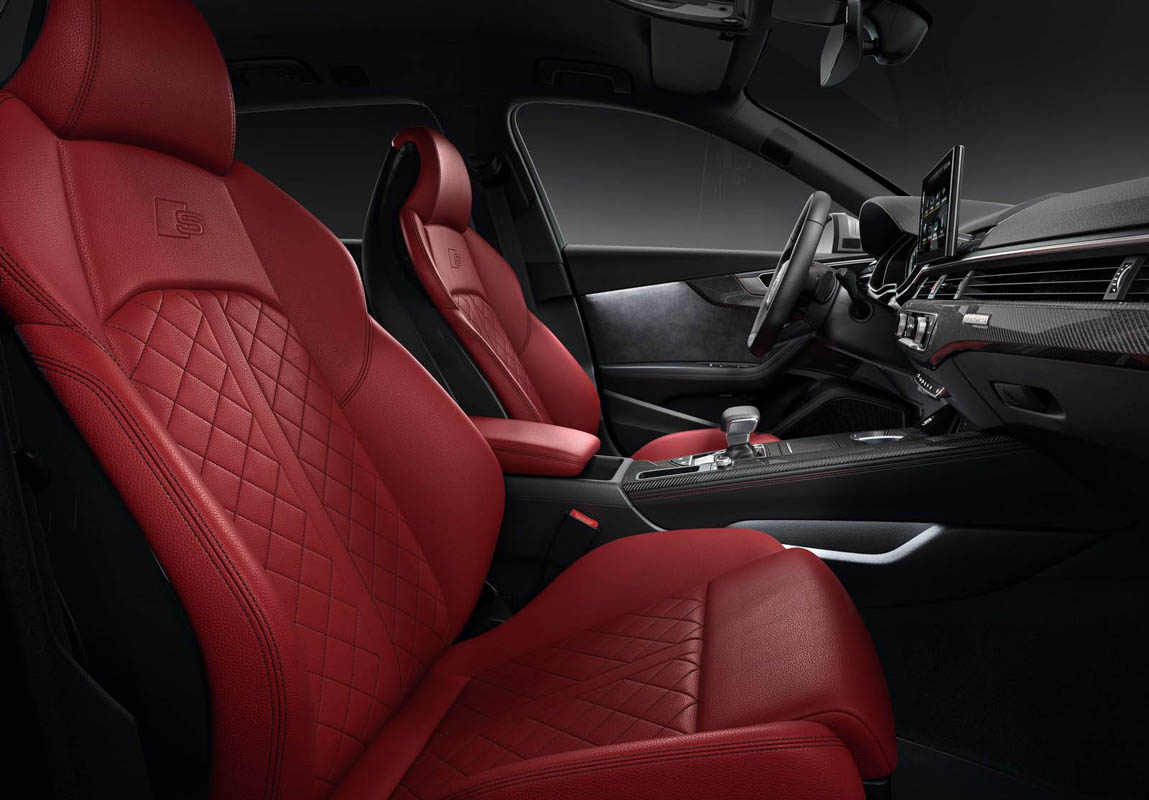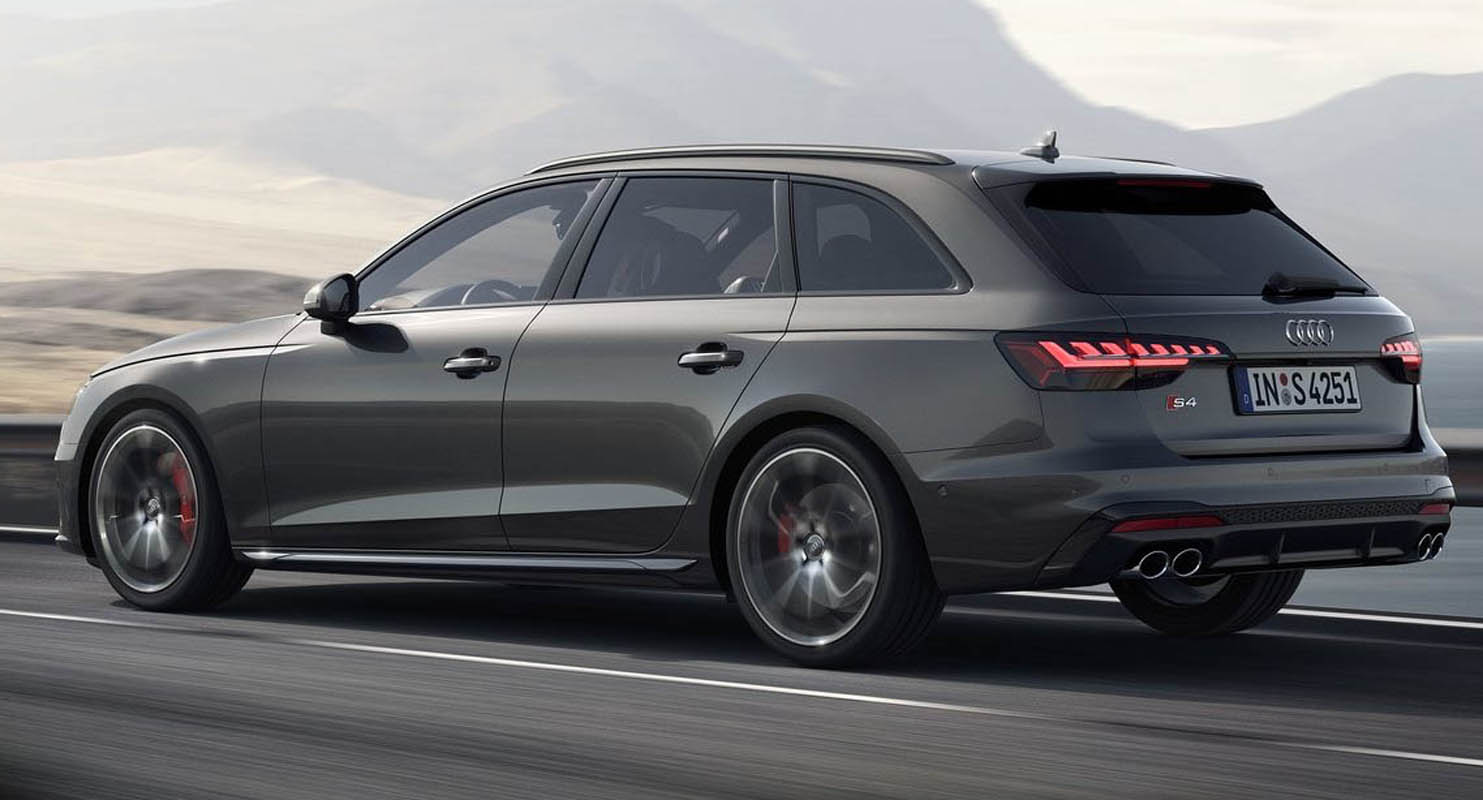
For the first time, both S models in the A4 family are using a V6 diesel engine – the Audi S4 Sedan TDI and the S4 Avant TDI. The 3.0 TDI produces 255 kW (347 metric hp) of power and up to 700 Nm (516.3 lb-ft) of torque. A mild hybrid system based on a new 48-volt main on-board electrical system increases efficiency, while the electric powered compressor (EPC) ensures powerful drive-off performance. This combination of power, torque, efficiency and spontaneity is unique in the segment.
The 3.0 TDI: brawny torque
The 3.0 TDI, the most powerful configuration level in Audi’s V6 diesel series, combines brawny performance with high efficiency. Its output is 255 kW (347 metric hp), and 700 Nm (516.3 lb-ft) of torque is available between 2,500 and 3,100 rpm. The V6 diesel accelerates the Audi S4 Sedan TDI from stationary to 100 km/h (62.1 mph) in 4.8 seconds; in the Audi S4 Avant TDI it is 4.9 seconds. Top speed is electronically governed at 250 km/h (155.3 mph).
The drive of the S TDI models integrates the EPC and mild hybrid technology (MHEV). Both systems are embedded in the standard 48-volt main on-board electrical system. For the first time, a powerful 48-volt belt alternator starter is the heart of the mild hybrid system in the S4 TDI, with maximum recuperation power during braking of up to 8 kW. A DC/DC converter transforms this voltage for the components in the 12-volt network. An additional compact air-cooled lithium-ion battery with a capacity of 0.5 kWh installed under the luggage compartment floor serves as the energy center.
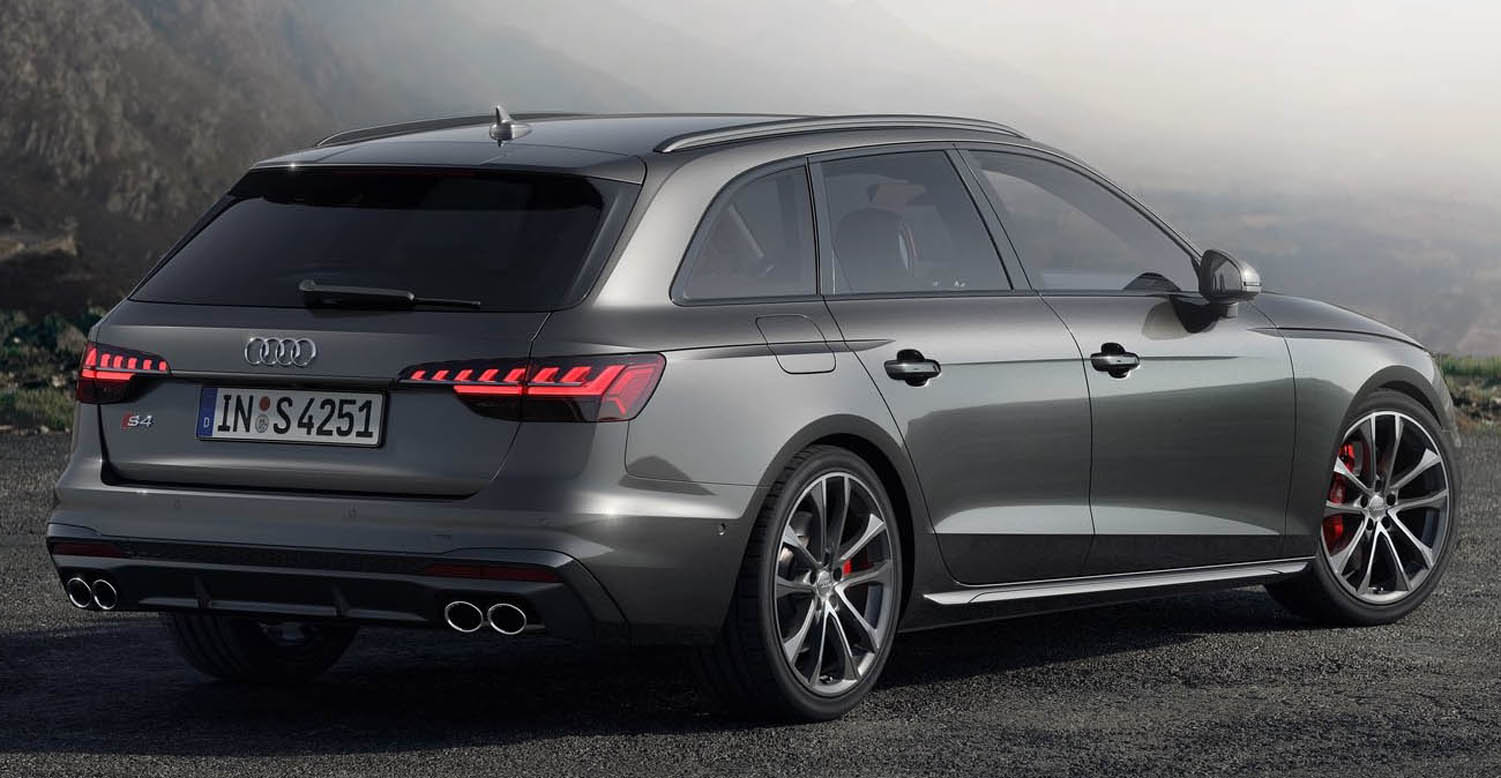
The EPC: fast support for the turbocharger
The electric powered compressor is installed in a bypass downstream of the intercooler close to the engine. If the power demand from the driver is high but the energy available in the exhaust flow is low, the bypass valve closes and directs the intake air into the EPC, which performs the second stage of compression. With an output of up to 7 kW, a compact electric motor accelerates its compressor wheel to 65,000 rpm in approximately 300 milliseconds.
Thanks to the support of the EPC, the power of the 3.0 TDI is available immediately whenever the driver wants it. The EPC preempts any hint of turbolag, thus enabling instant responsiveness in all driving situations, whether overtaking or accelerating out of a curve. During relaxed driving, the technology ensures strong torque at the lower end of the rpm range, meaning fewer downshifts are required. From a standing start, both S models quickly move several meters ahead of comparable vehicles without an EPC.
MHEV technology: recuperate or coast
The mild hybrid system in the S models has the potential to reduce customer fuel consumption by as much as 0.4 liters per 100 kilometers. There is a water-cooled 48-volt belt alternator starter (BAS) at the front end of the 3.0 TDI, which is connected to the crankshaft via a particularly resilient poly-V-belt. The BAS recovers up to 8 kW of power during braking. It works together closely with the TDI, which can therefore be operated closer to its ideal load point in many situations. This improves efficiency.
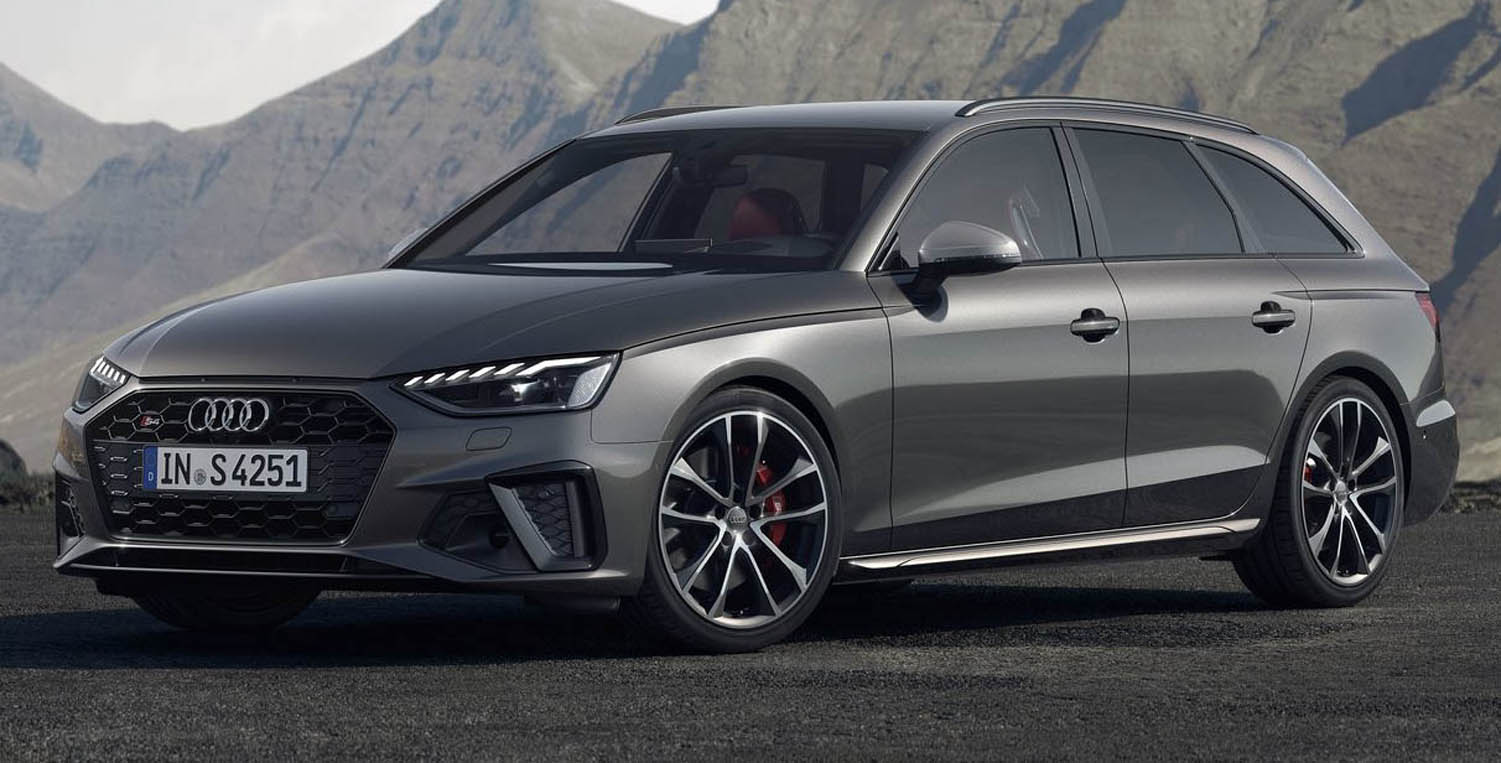
When drivers take their foot off the accelerator pedal at a speed between 55 and 160 km/h (34.2 to 99.4 mph), the car can coast for up to 40 seconds with the engine shut off completely. The lithium-ion battery continues to supply electricity. The drive management decides in each individual situation whether coasting, freewheeling, or recuperating is more efficient. To do so, it uses the information from the navigation and the on-board sensors. The energy supplied to the BAS flows into the 48-volt storage battery or directly to the electrical consumers.
The mild hybrid system not only reduces fuel consumption; it also provides greater comfort and convenience. The conventional starter is only used to start the car initially, when cold engine oil requires high forces. When the driver presses the accelerator pedal again after a coasting phase or a stop, the BAS restarts the TDI as required by the driver’s wishes and the situation, from very smoothly to very quickly. Start-stop operation begins at a speed of 22 km/h (13.7 mph). When stopped, the engine restarts as soon as the car in front starts to move, even if the brake is depressed.
The engine: torquey and efficient
The 3.0 TDI is a high-tech engine. Its common rail system injects fuel at a pressure of up to 2,500 bar. Crankshaft, pistons, connecting rods and oil management have been designed for high demands, and sophisticated measures have been taken to reduce friction in the crankshaft and camshaft drive. The oil cooler, the EPC, the BAS and the compressor case of the turbocharger are integrated into the coolant flow as needed.
The large turbocharger generates up to 2.4 bar of relative charging pressure. Its variable turbine geometry is optimized for low-loss flow. The external low-pressure exhaust gas recirculation system extracts the exhaust gas downstream of the particulate filter. This makes it possible to drive the turbocharger with the full mass flow, significantly increasing its efficiency.

Audi offers the S4 Sedan and the S4 Avant with a gasoline engine, the 3.0 TFSI, in markets outside Europe. The turbocharged direct injection engine has an output of 260 kW (354 metric hp) and produces a hefty torque of 500 Nm (368.8 lb-ft) from 1,370 to 4,500 rpm. The V6 engine propels the S4 Sedan TFSI from 0 to 100 km/h (62.1 mph) in 4.7 seconds and up to an electronically governed top speed of 250 km/h (155.3 mph). The standard sprint takes two tenths of a second longer in the Audi S4 Avant TFSI.
The eight-speed tiptronic: lightning-fast and smooth
The 3.0 TDI works in conjunction with an eight-speed tiptronic that enables comfortable and highly efficient shifting. New detail solutions improve its cooperation with the MHEV system. A clutch in the central transmission interrupts the flow of power when the car is rolling and the engine is either idling or shut off. When coasting, an electric oil pump independent of the combustion engine makes it possible to engage the gear required at restart. Narrow springs at the multi-plate brakes in the gear sets separate the plates from one another, thus reducing drag torque.
The two-mass flywheel includes an rpm-adaptive damper that largely attenuates the vibrations of the V6 diesel that occur at very low engine speeds.
The quattro permanent all-wheel drive: self-locking center differential
The quattro permanent all-wheel drive endows the S models with sporty dynamism, high stability and firm grip. When a sporty driving style is adopted, the wheel-selective torque control perfects handling. As a complement to the quattro drive, the sport differential is available upon request. It can shift the power between the rear wheels as required during dynamic cornering.
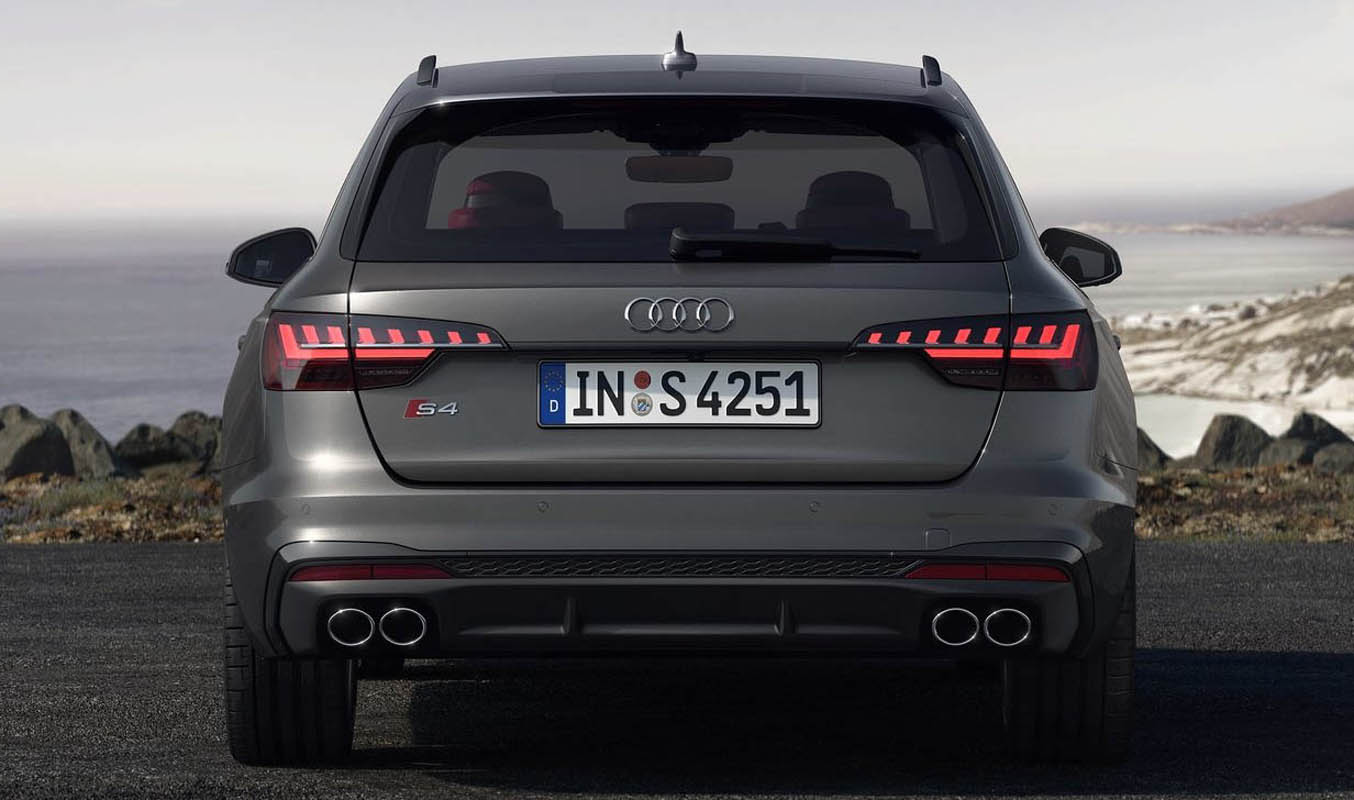
The sport suspension: control in millisecond cycles
The suspension makes a major contribution to the dynamics of the S models. The standard S sport suspension lowers the body by 23 millimeters (0.9 in) compared to the A models. Dynamic steering is available as an option. In addition, Audi offers an S-specific sport suspension with damper control on request. This is managed via the electronic chassis platform (ECP), which controls the optional sport differential too. Both modules are also integrated into the Audi drive select dynamic handling system. The driver can adjust its function by switching between the profiles comfort, auto, dynamic, efficiency and individual (only with the MMI plus).
18-inch wheels with 245/40-series tires are standard on the S TDI models. 19-inch wheels with 255/35-series tires are optional. The brakes are large and powerful – the ventilated discs on the front axle measure 375 millimeters (14.8 in) in diameter. They are gripped by black (or optionally red) six-piston fixed calipers with S logos. The Electronic Stabilization Control can be deactivated partially or completely.
The design: sporty expression
The redrawn exterior of the Audi S4 Sedan TDI and S4 Avant TDI bears all the hallmarks of the current Audi design language – with sporty accents. A slit below the hood is reminiscent of the brand icon, the original Audi quattro. Silver frames structure the large air inlets that are filled with honeycomb grilles. The S TDI models are equipped with LED headlights as standard. When viewed from the side, the silver exterior mirror housings and the strongly contoured sill trims – also silver – are particularly eye-catching. On the roof of the Audi S4 Avant TDI, the aluminum-look rails and the long spoiler create accents. With the Sedan, the spoiler is integrated into the luggage compartment lid.
At the rear, LED lights with dynamic indicators come as standard. The large diffuser in matt dark chrome with a silver trim contains a honeycomb insert. Ribs subdivide its lower section, which frames the four chrome-plated exhaust tailpipes. S badges adorn the outer skin and the illuminated door sill trims. Paint finishes in Daytona gray, quantum gray and turbo blue are reserved for the S models (as well as the S line exterior).
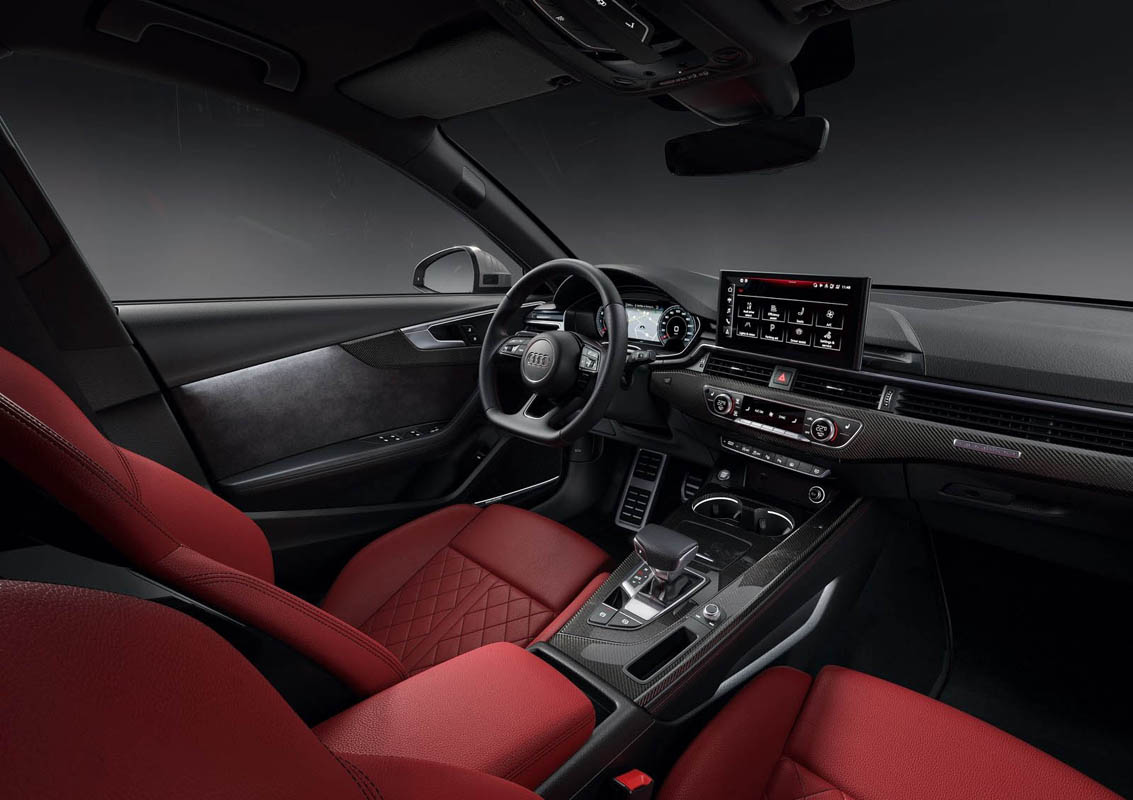
From the headlining to the carpet, the interior of the S TDI models is characterized by cool black. The sport seats with S embossing come as standard – S sport seats with integrated head restraints and rhombus pattern are available on request. The upholstery is optionally embellished with contrasting stitching and, for climate-controlled seats, with piping in twin leather. Further combinations are leather/Alcantara or fine Nappa leather. As a top-of-the-line offer, Audi has a super sport seat that is available in fine Nappa leather – in terms of colors, you can choose from black, rotor gray and magma red. The pedal caps and the footrest are made of stainless steel; the inlays are made of matt brushed aluminum or optionally carbon atlas.
The optional Audi virtual cockpit plus presents all displays in a specific look, beginning with the welcome screen. The driver can change the display by switching between the sport mode and the S mode, where the rev counter takes center stage. If they have the tiptronic operate in manual mode and delays changing gears, a shift light indicates the imminent gear change to the driver. There are displays for the engine oil temperature, the boost pressure of the turbocharger and lap times at a racetrack.
With a wide range of connectivity solutions and assist systems, the Audi S4 Sedan TDI and the S4 Avant TDI make driving even more relaxed and comfortable. The S models with TDI engines have been available to order on the European market since May 2019. This includes popular equipment options from the Audi A4 Sedan – when compared with the A4 Sedan 45 TDI quattro tiptronic with a power output of 170 KW (231 metric hp), for example – valued at around 6,400 euros as standard. These include LED headlights with dynamic rear indicators, S sport suspension with tautly tuned suspension and damping, 18-inch wheels, power-adjustable front sport seats with Alcantara leather and S embossing, and sportily contoured bumpers.
